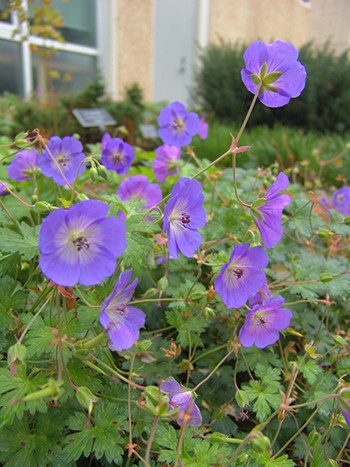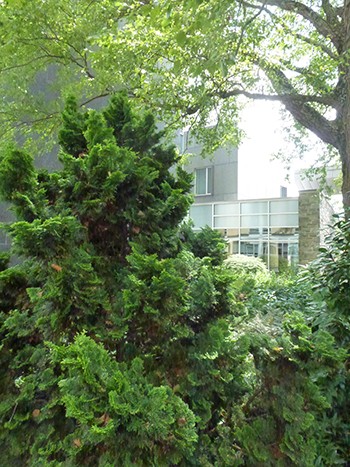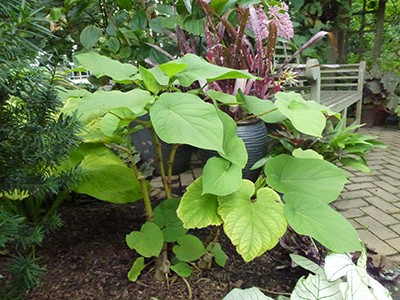Plants of the Week: July 31
Geranium Rozanne® ‘Gerwat’
Large swaths of this hardy geranium cultivar, also called cranesbill, can be found around the Harry Wood Courtyard Garden. Geranium Rozanne® was bred for its clumping growth habit and almost non-stop flowering during the summer. It forms mounds up to two feet wide.
Its large, violet-blue flowers can be deadheaded as they fade to increase further blooming. Rozanne® has excellent heat tolerance thriving in full sun and part shade. As long as your soil is not waterlogged, this cultivar should be happy. Photo credit: R. Robert
Chamaecyparis obtusa ‘Nana Gracilis’
Chamaecyparis, or falsecypress just might be my favorite genus of plant, and there are quite a few on campus. While I was in the Harry Wood Courtyard Garden, I stopped to appreciate the dwarf cultivar ‘Nana Gracilis’. Known as the Hinoki falsecypress, C. obtusa is highly valued in its endemic country of Japan, for the quality of its wood. The aromatic wood is also used to make incense, although the pollen of the Hinoki falsecypress is one of the biggest contributors to hay fever in Japan.
‘Nana Gracilis’ combines the attributes of two cultivars. ‘Nana’ was bred as a compact cultivar, while ‘Gracilis’ was bred for its slender, ornamental growth habit. ‘Nana Gracilis’ is a compact variety, although some individuals in England have reached eleven feet in height. An average mature specimen will be six to nine feet in height with a very distinct pyramidal growth habit.
The dark green foliage is compacted, giving the plant a rich texture. ‘Nana Gracilis’ likes moist soils with protection from strong winds. As a compact variety, ‘Nana Gracilis’ is often trained as bonsai. Photo credit: G. Wermeling
Piper auritum
You can get a good whiff of Piper auritum near pergola in the Terry Shane Teaching Garden. Known as the root beer plant, the aroma can be easily rubbed onto the fingers from the leaves.
While this plant has historically been used as an herb, you may be surprised one day to find yours approaching six feet tall. P. auritum has a shrubby growth habit but cannot survive temperatures below 32 degrees.
It can be raised in a container, provided you bring it inside during the winter. P. auritum does best in full sun to partial shade. Be careful to not allow the plant to dry out Kids and adults alike will enjoy smelling the root beer plant in your garden. Photo credit: G. Wermeling








No Comments